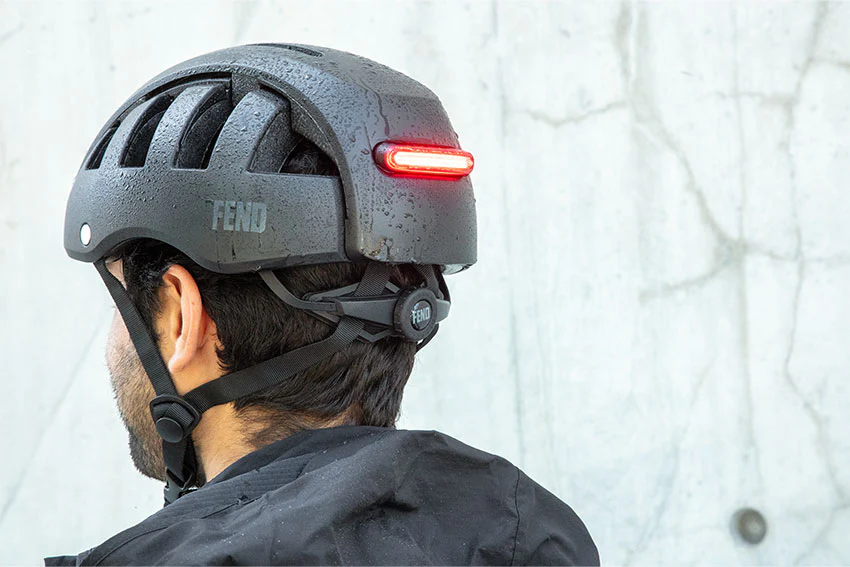Cycling is one of the most popular and eco-friendly modes of transportation and exercise. However, as with any physical activity, it comes with its risks. One of the most important pieces of safety gear every cyclist should wear is a helmet for cycling safety. Helmets are designed to protect your head in case of an accident, and they can significantly reduce the severity of injuries. Here’s why wearing a helmet is essential for every cyclist.
Why Cycling Helmets Are Crucial
Cycling helmets are designed to absorb impact and protect your head from serious injuries during falls or accidents. In the event of a collision or sudden stop, a helmet acts as a barrier between your skull and the ground, reducing the risk of brain injuries. Studies have shown that wearing a helmet can reduce the risk of head injury by up to 70% and the risk of brain injury by 60%.
How Helmets Protect Cyclists
A cycling helmet is typically made from lightweight materials like foam and a hard outer shell. The inner foam, often made from expanded polystyrene (EPS), helps absorb the energy from an impact. This reduces the amount of force transferred to your skull and brain, preventing serious injuries. The outer shell is made of hard materials such as polycarbonate or fiberglass to protect against sharp objects and abrasion.
Helmets are designed to protect various parts of the head, including the forehead, the back of the head, and the sides. This provides complete coverage, ensuring that no matter how you fall, your head will be shielded.
Helmet Safety Standards
Not all helmets are created equal, and it’s important to make sure that your helmet meets the necessary safety standards. In most countries, helmets must meet specific standards to be sold. These standards may include certifications like the CPSC (Consumer Product Safety Commission) in the U.S. or CE (Conformité Européene) in Europe. Always look for these safety labels to ensure your helmet is designed for maximum protection.
Helmet Featurses for Comfort and Safety
Modern cycling helmets come with a variety of features that enhance both comfort and safety. Some of the key features to consider include:
-
Ventilation: Helmets are equipped with vents to allow air circulation, which helps keep your head cool during rides, especially on hot days.
-
Adjustability: Look for helmets with adjustable straps and a dial fit system to ensure a snug, customized fit.
-
Padding: Many helmets come with removable and washable padding to improve comfort and hygiene.
-
Visibility: Some helmets include reflective elements or built-in lights to make cyclists more visible to other road users, especially in low-light conditions.
Choosing the Right Helmet for Cycling Safety
When selecting a helmet for cycling, there are a few important factors to consider:
-
Fit: The most important aspect of any helmet is its fit. A helmet should sit snugly on your head without being too tight. It should be level on your head, not tilted backward or forward. You should also adjust the straps to ensure the helmet stays securely in place.
-
Size: Helmets come in different sizes, and choosing the right size is crucial for optimal protection. Measure the circumference of your head to find the correct size before purchasing.
-
Type of Riding: Depending on your cycling style (road biking, mountain biking, casual cycling), you might need a helmet designed specifically for that type of activity. Mountain biking helmets, for example, provide extra protection at the back of the head and often feature a visor to protect your eyes from the sun or debris.
The Importance of Wearing a Helmet Every Time You Ride
Even if you’re an experienced cyclist or only taking a short ride, wearing a helmet is always a smart decision. Accidents can happen when you least expect them, and wearing a helmet greatly reduces your risk of serious injury. It’s a small investment in your safety that can save your life.
Conclusion
A helmet for cycling safety is an essential piece of gear that no cyclist should go without. It provides critical protection in the event of an accident, reducing the risk of serious injuries to your head and brain.
Always ensure that your helmet fits properly, meets safety standards, and is suited to your type of cycling. Your safety should always be a top priority, and wearing a helmet is one of the easiest ways to protect yourself while enjoying the freedom of cycling.









